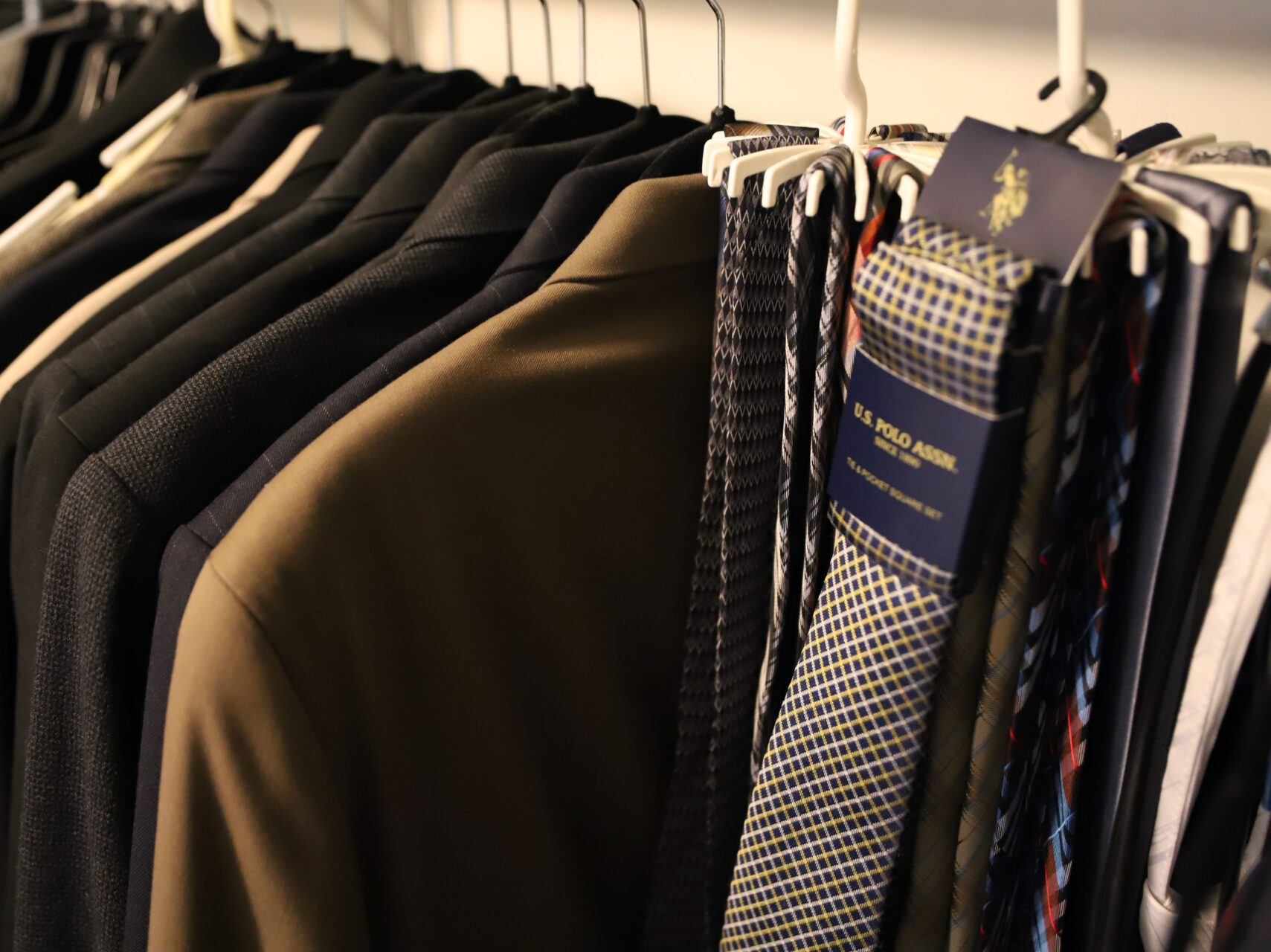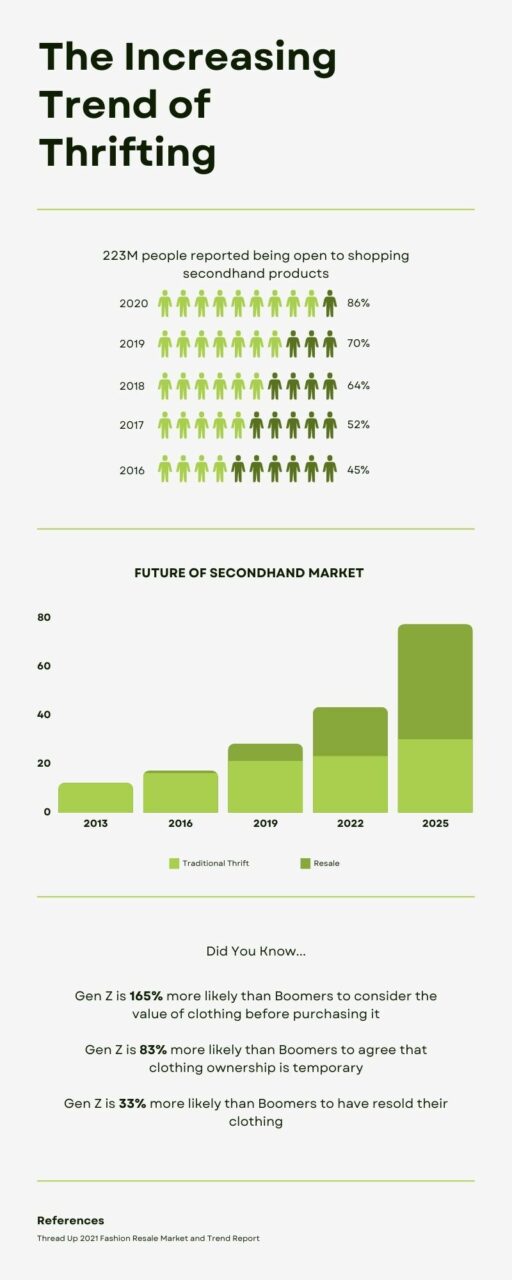The trend of thrift shopping has increased significantly over the past few years, affecting traditional retail stores in the United States.

In August 2021, the U.S. Census Bureau gathered data from the National Association of Resale and Thrift Shops showing about 16–18% of Americans will shop at a thrift store during a given year. For consignment or resale shops, it’s about 12-15%.
“To keep these figures in perspective, consider that during the same time frame, 11.4% of Americans shop in factory outlet malls, 19.6% in apparel stores and 21.3% in major department stores,” their website said.

There are many reasons thrifting has become popular with this generation. Ethan Winspear, a 21-year-old biology major at BYU, shared thrifting is something he does when a new season starts and he is in need of clothes. He also favors the ability it gives him to curate a unique style at a lower cost.
Another reason some might sway toward thrifting over traditional retail stores would be the eco-friendly and sustainability benefits that come with it.
“I believe thrifting is a huge trend that will continue to grow, particularly pushed by the younger generations that are environmentally conscious,” said Michelle Hyde, a BYU professor teaching SFL 280: Dynamics of Clothing. “Never before have young adults been so in-tune and so environmentally aware of the negative impact of conspicuous consumption.”
Trends within fashion are constantly being recycled, leaving society with an overflowing abundance of styles to choose from. The most recent decade to be circling around would be the early 2000s fashion.
Social media plays an important role in influencing society to follow these trends. Kian Harouni, manager at retail warehouse Lime Lush Boutique, talked about the process of how brands will work with independent content creators on various platforms to advertise their product to larger audiences.
Although thrift shops offer a wide range of styles, finding a specific piece of clothing may be more challenging. Aubree Remmel, a 19-year-old BYU student studying exercise science, said she prefers traditional retail stores because it helps her get an idea of how to style a piece.
“I usually go thrifting with friends as a social outing, not with the intention of finding something specific,” Remmel said.
For statement pieces worth investing more money in, others tend to lean more toward traditional retail stores. Harouni said these stores offer ease and access compared to thrifting, which often requires patience and effort.
Although traditional retail stores have these advantages, the challenge of shipping orders continues to exist. Harouni described the impact the COVID-19 pandemic has had on the online shopping industry.
“The LA port sees about 40% of the world’s shipping containers passing through and earlier in October there were over 100 cargo ships locked at port,” Harouni said. “In our own warehouse, it’s been very hard to deliver on customer promises and things like pre-orders because delivery dates for our own products get delayed.”
Some people still look down upon thrifting, Harouni said.
“I’ve found some people really look down on thrifting and find it ‘lower class’ or ‘depraved’ and I personally know many people whose parents refused to let them wear thrift wears or hand-me-downs, so it was also a bit of a class thing too,” Harouni said.
As it has become more common among society, people have begun to see it in a different light.
“I thought it was a little weird and gross to buy used clothing,” Remmel said. “With age, my opinion has evolved to appreciate giving clothing a ‘second life.'”
Hyde said the negative stigma is disappearing and it’s now considered cool to find treasures to create new styles from recycled clothing.




